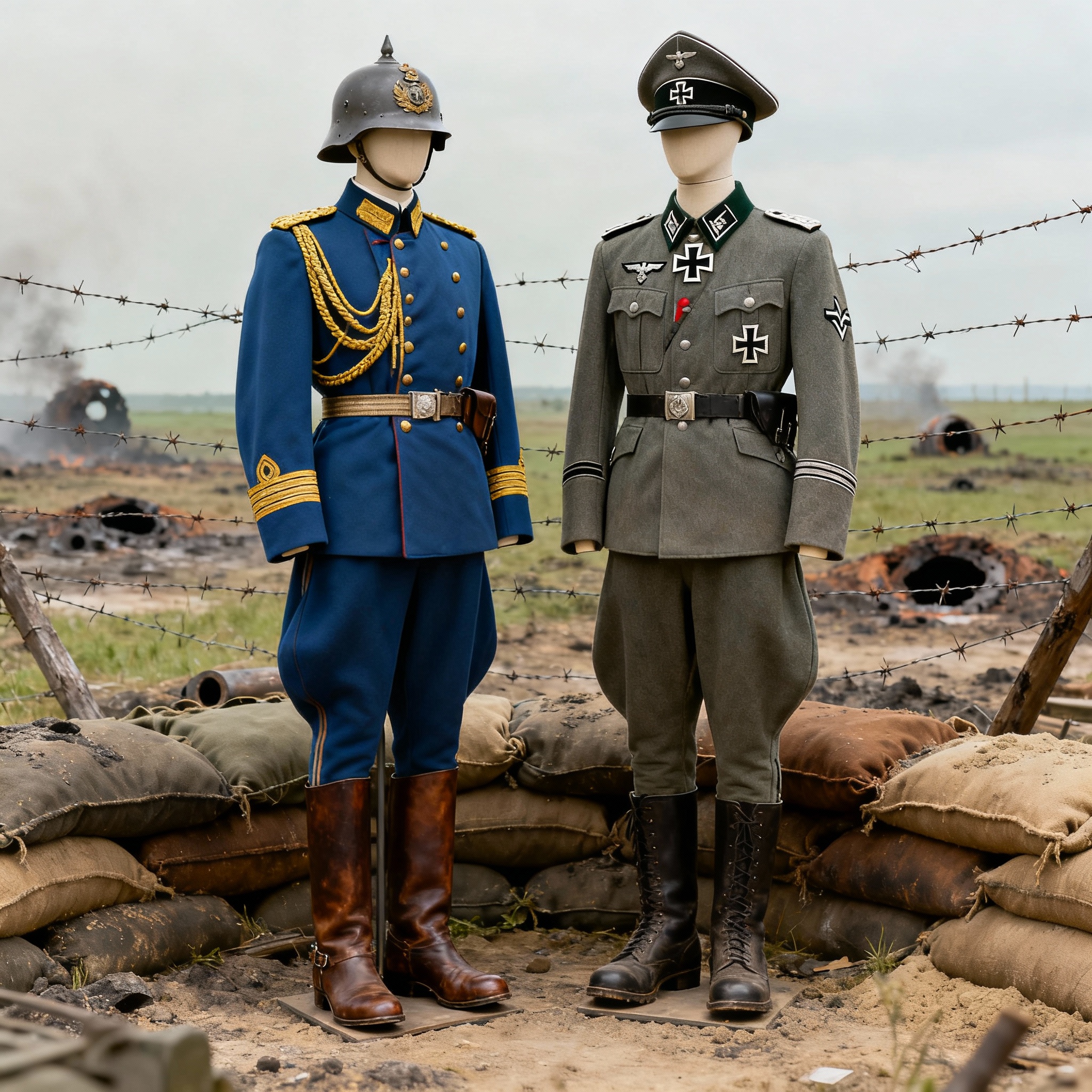
German Empire Uniforms: History, Details & Collecting Tips for WW1 & WW2 Fans
Published on Oct 01, 2025
🇩🇪 German Empire Uniforms: A Beginner's Guide to History, Styles & Smart Collecting
🧠 Did You Know?
More than 13 million soldiers served in the German Empire's army during WW1, each outfitted with standardised, yet evolving, military uniforms. But not all uniforms were the same — and that’s where the fun (and challenge) begins for historians and collectors.
Whether you're fascinated by history or hunting for authentic WW1/WW2 gear, German Empire uniforms offer a rich blend of military tradition, design evolution, and regional variation. In this guide, you'll get actionable steps for identification and collecting, learn common pitfalls to avoid, and understand how modern trends affect today’s militaria scene.
⚔️ Understanding the History Behind German Empire Army Uniforms
🎖️ Key Periods to Know:
- Pre-WW1 Era (1871–1914): The classic blue tunics and spiked Pickelhaube helmets defined the early German Empire look.
- World War 1 (1914–1918): Field grey (Feldgrau) became the standard, introducing practicality over pageantry.
- Post-War & WW2 Influence: Though the Empire dissolved in 1918, its uniform heritage deeply influenced the Wehrmacht and WW2 attire.
🧵 German Empire Uniforms: Key Components Explained
👕 Standard Pieces in German Empire Military Uniforms
- Tunic (Waffenrock or Feldbluse) – Either dark blue or feldgrau.
- Pickelhaube (Spiked Helmet) – Iconic leather/metal helmet, worn with pride until replaced by the Stahlhelm.
- Trousers (Hosen) – Matched the tunic, often piped with regimental colours.
- Boots – High leather jackboots (Marschstiefel) used by cavalry and infantry.
- Insignia & Rank Markings – Shoulder straps, cuffs, and coloured piping indicated regiment and rank.
💡 Tip: Many collectors mistake late WW1 feldgrau tunics for early WW2 types. Always check the insignia and lining material!
🔍 How to Identify Authentic German Empire Army Uniforms
🛠️ Actionable Steps for Identification:
- Check for Original Markings
- Look for depot stamps or manufacturer markings inside tunics or helmets.
- German script dates like "1915" or "AKB" (Armeekleiderkasse Berlin) are key indicators.
- Examine Material & Stitching
- Pre-1915 tunics often used high-quality wool, while wartime production shifted to coarser blends.
- Stitching should be machine-sewn, not hand-sewn — unless it's a field repair.
- Insignia Accuracy
- Shoulder boards, collar tabs, and buttons are regiment-specific.
- Cross-check with official uniform guides or historical archives.
- Match Against Known Uniform Charts
- Use references like the Marine Service Alphas Regulations and Prussian Army guidelines to confirm design and detail.
🧭 Common Pitfalls When Collecting German Empire Army Uniforms
⚠️ Don’t Fall for These Mistakes:
- Confusing WW1 and WW2 Pieces
- WW2 re-enactors often repurpose WW1 gear, making it harder to identify originals.
- Buying From Unverified Sellers
- eBay and flea markets are full of reproductions. Always buy from trusted militaria dealers or auctions.
- Assuming All Feldgrau Is the Same
- Feldgrau shades varied between units and years. Slight colour differences are common — and important.
- Overlooking Damage or Modifications
- Many field-used uniforms were repaired. Learn to spot wartime repairs vs. modern alterations.
🌍 Modern Trends in German Empire Military Uniform Collecting
🔥 What’s Hot in the Militaria Scene Right Now?
- WW1 Officer Uniforms – Especially tunics with original medals or regimental markings.
- Cavalry Units & Hussar Jackets – Their flamboyant designs are rare and in high demand.
- Marine Corps Uniforms – Thanks to growing interest in naval history, Marine Corps Alpha Regulations are increasingly sought after.
- Personalised Pieces – Items with soldier names, photos, or provenance fetch high prices.
📈 Collectors today value stories. Uniforms with documented service history are considered top-tier.
🛍️ Actionable Tips for Starting Your Collection
🎯 Step-by-Step:
- Start Small
- Begin with common infantry pieces like M1910 tunics or belt buckles.
- Visit Military Shows or Reenactments
- These are great places to learn, connect, and buy safely.
- Join Forums or Facebook Groups
- Communities like the Wehrmacht Awards Forum or the Militaria Collectors Network offer tonnes of insight.
- Get a Good Reference Book
- Try “The German Army 1914–1918” by Jürgen Kraus or “Uniforms of the German Soldier” by Alejandro M. de Quesada.
- Keep Detailed Records
- Document each piece: where it came from, who sold it, and any history it holds.
🧑🏫 Real-Life Example: Identifying a Prussian Infantryman’s Tunic
Jake, a new collector, found a Feldgrau tunic online for $300. It looked authentic, but something felt off.
After comparing the button markings, checking the collar piping, and consulting a 1915 regimental chart, he realised it was a reproduction from the 1970s.
Lesson? Don’t buy without cross-referencing — and always ask for interior photos.
🏁 Conclusion: Preserve History, Collect Smartly
German Empire uniforms aren't just fabric and metal — they're time machines into one of history’s most turbulent eras. Whether you’re just getting started or looking to expand your collection, understanding the details, variations, and history behind German Empire military uniforms will keep your journey informed and rewarding.
